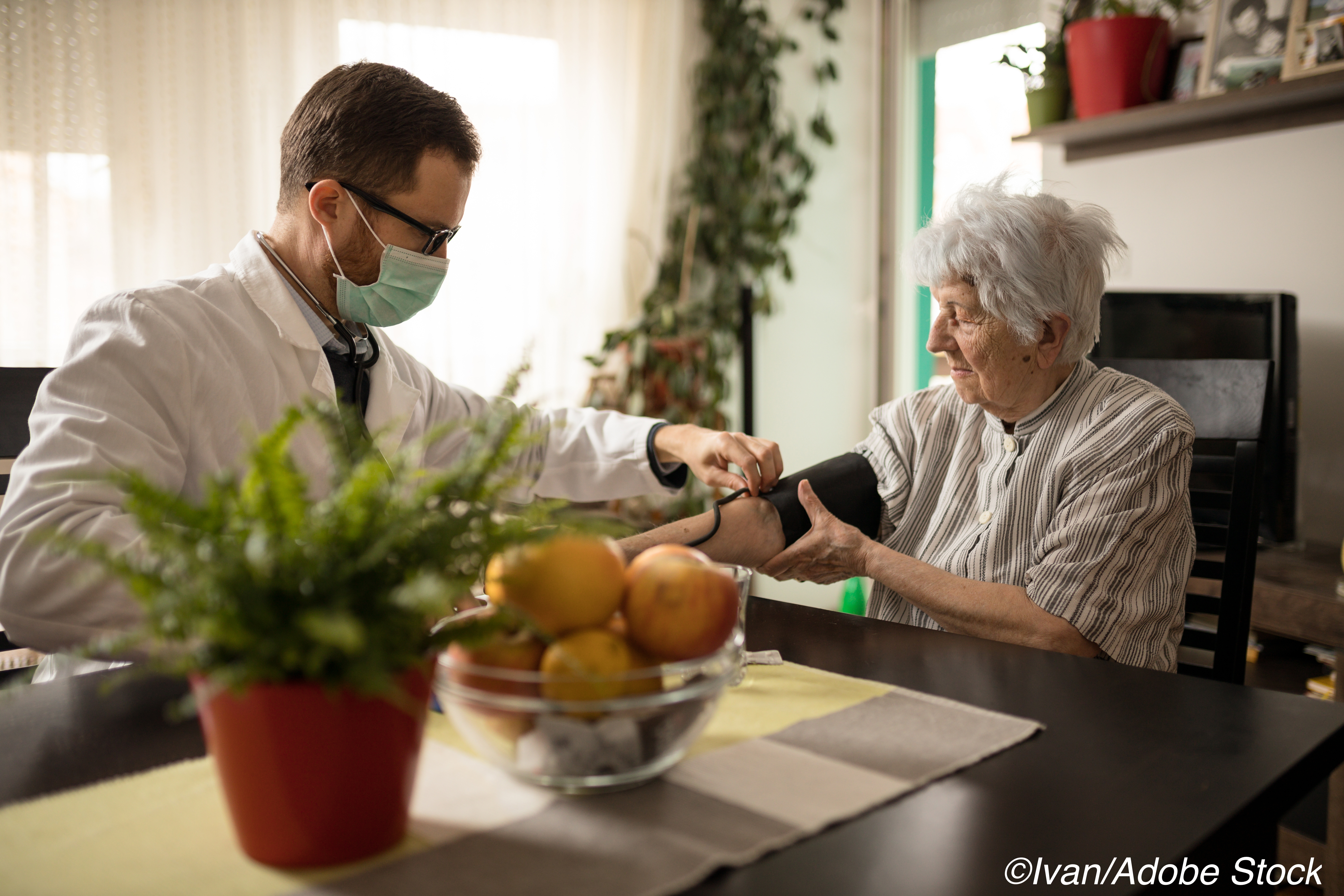
According to a qualitative study based on interviews with home health care workers from New York City, these workers, already part of a marginalized workforce, “face additional risks to their physical, mental, and financial well-being during the Covid-19 pandemic” and interventions and policies “are urgently needed to protect this workforce and the vital role that they play.”
The study, led by Madeline R. Sterling, MD, MPH, Department of Medicine, Weill Cornell Medicine, New York, N.Y., was published in JAMA Internal Medicine.
Despite the important role they play, home health care workers represent an often “invisible and vulnerable workforce,” wrote Sterling and colleagues. These workers are mostly persons of color, women, and immigrants who work long hours at low wages with limited opportunities to advance their careers.
“As the Covid-19 pandemic escalates and as home health care workers continue to care for elderly patients and for medically complex patients in the home, it is likely that this workforce will become increasingly more vulnerable, both physically and financially,” the authors pointed out. Therefore, this study’s objective was to evaluate the experiences of these workers while caring for their patients during the pandemic, and the challenges they face regarding virus transmission, preparedness, and their own wellbeing.
The study was conducted in March and April 2020, when the pandemic was at its height in New York City. Three researchers conducted semistructured interviews with 33 home health care workers, with questions focusing on what workers knew about Covid-19, how it affected their work, and the challenges they experienced during the pandemic.
Of the 33 persons in the study, 32 (97%) were women with a mean age of 47.6 years, and a mean of 10.9 years of experience as home health care workers. About two-thirds (64%) were Black, while 18% were Hispanic.
Also, 4 of the 33 (12%) workers had either self-reported suspected or confirmed Covid-19. In a commentary accompanying the study, Theresa A. Allison, MD, PhD, Department of Medicine, University of California, San Francisco, and colleagues wrote that this suggests how vulnerable these workers are to the transmission of COVID-19.
According to Sterling and colleagues, the interviews resulted in the emergence of 5 major themes:
- These were essential workers, on the pandemic front line in New York City, who nevertheless felt invisible.
- They believe they are at a heightened risk of getting the virus and transmitting it to their patients.
- The level of support regarding Covid-19 information and training, and access to personal protective equipment varied by institution or agency.
- These workers had to rely on alternative sources for support, including the need to purchase their own supplies, or turn to family members or friends.
- The pandemic forced them to make difficult trade-offs between their own health and their financial well being.
“Taken together, caring for patients during the Covid-19 pandemic exacerbated this workforce’s existing vulnerabilities and professional challenges,” wrote Sterling and colleagues.
In their commentary, Allison and colleagues called the study’s findings “alarming but not surprising,” and wrote that they are of considerable importance despite the modest size of the study.
“More than 7 million older Americans are estimated to need care in their homes due to functional, cognitive, or social limitations,” they pointed out. “Per the findings of Sterling et al, home care workers need to be recognized and treated as essential members of our health care teams that enable older adults to remain at home and indirectly protect our emergency departments and hospitals from becoming overwhelmed during a pandemic.”
Furthermore, Allison and colleagues suggested that the demand for home health care will only increase as the pandemic leaves hospitalized patients weak and debilitated when they finally return home, and older patients remain home even after contracting Covid-19. They recommended that a number of steps need to be taken to support these workers, including the promulgation of legislation such as proposed U.S. House and Senate’s Coronavirus Relief for Seniors and People with Disabilities Act that would issue Medicaid grants to states to provide wage increases, overtime pay, and paid sick, medical, and family leave to home health care workers.
- Durnig the height of the Covid-19 pandemic in New York City, home health care workers felt unsupported by their agencies and institutions, believed they and their patients had an increased risk of Covid-19 transmission, and were often forced to make hard choices between their health and their financial well-being.
- Interventions and policies are needed to protect this vulnerable workforce.
Michael Bassett, Contributing Writer, BreakingMED™
Sterling reported receiving grants from the Robert Wood Johnson Foundation and from the National Heart, Lung, and Blood Institute (NHLBI) during the conduct of the study.
Allison reported receiving grants from the National Institute on Aging during the preparation of this article.
Cat ID: 151
Topic ID: 88,151,254,930,190,926,192,927,151,928,925,934

